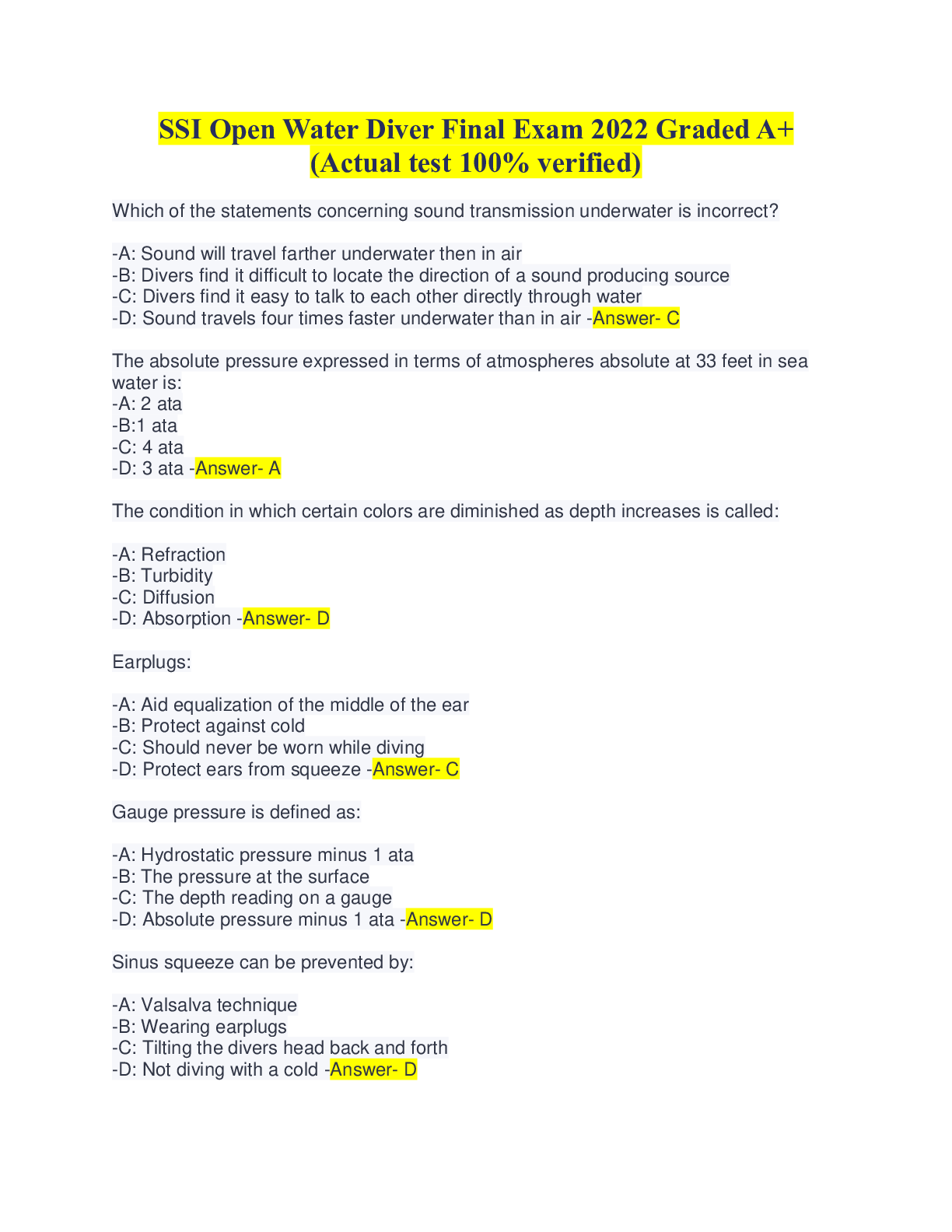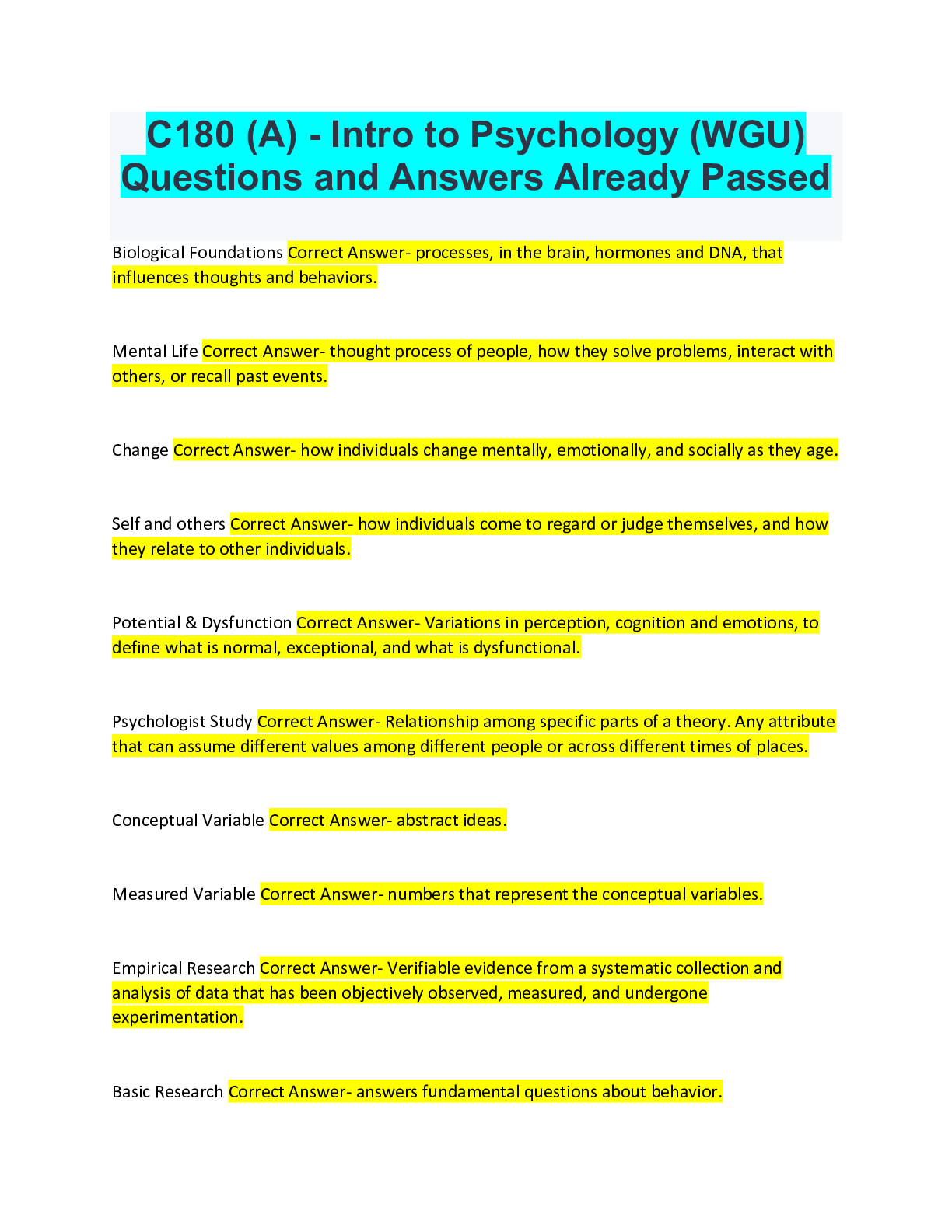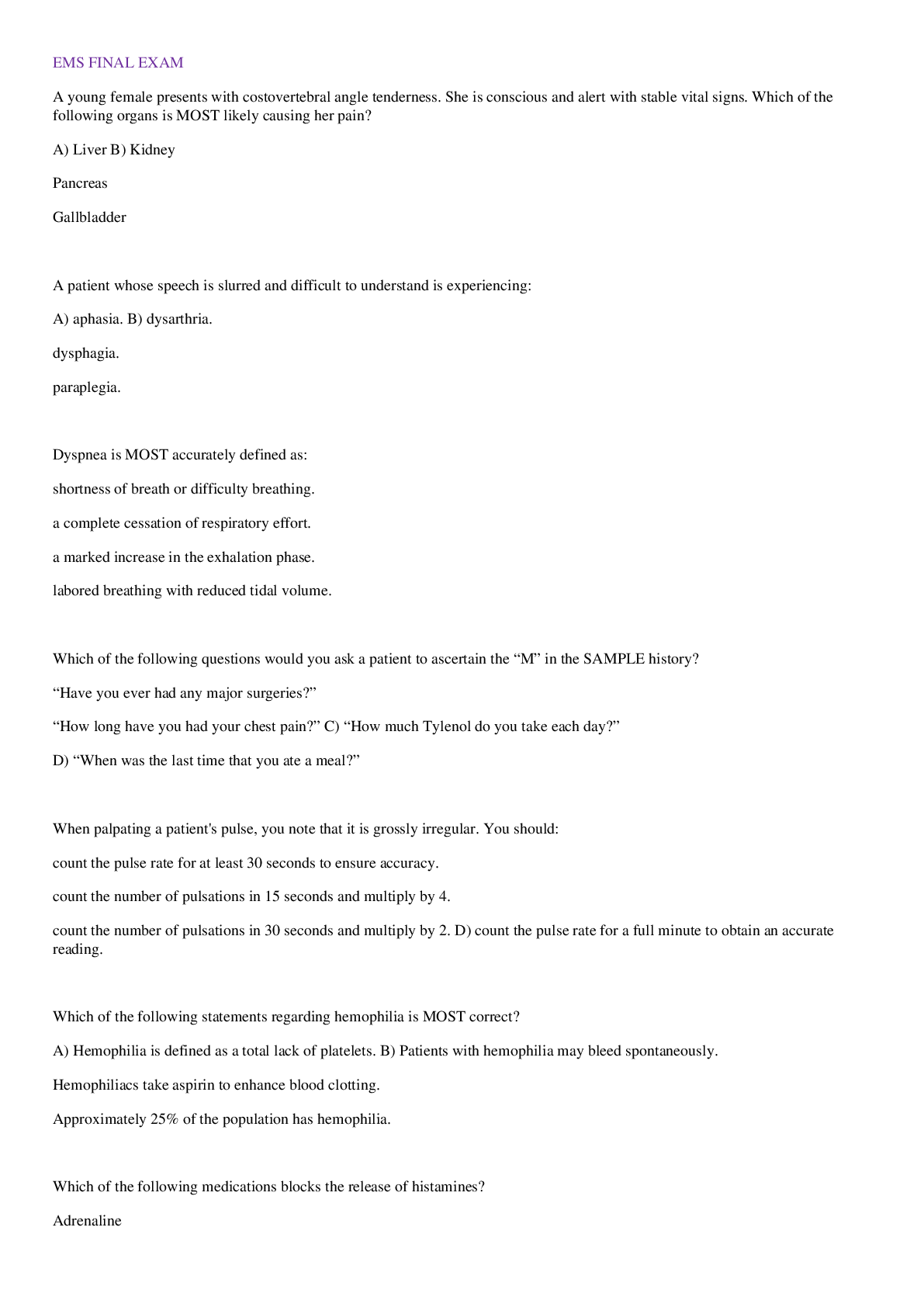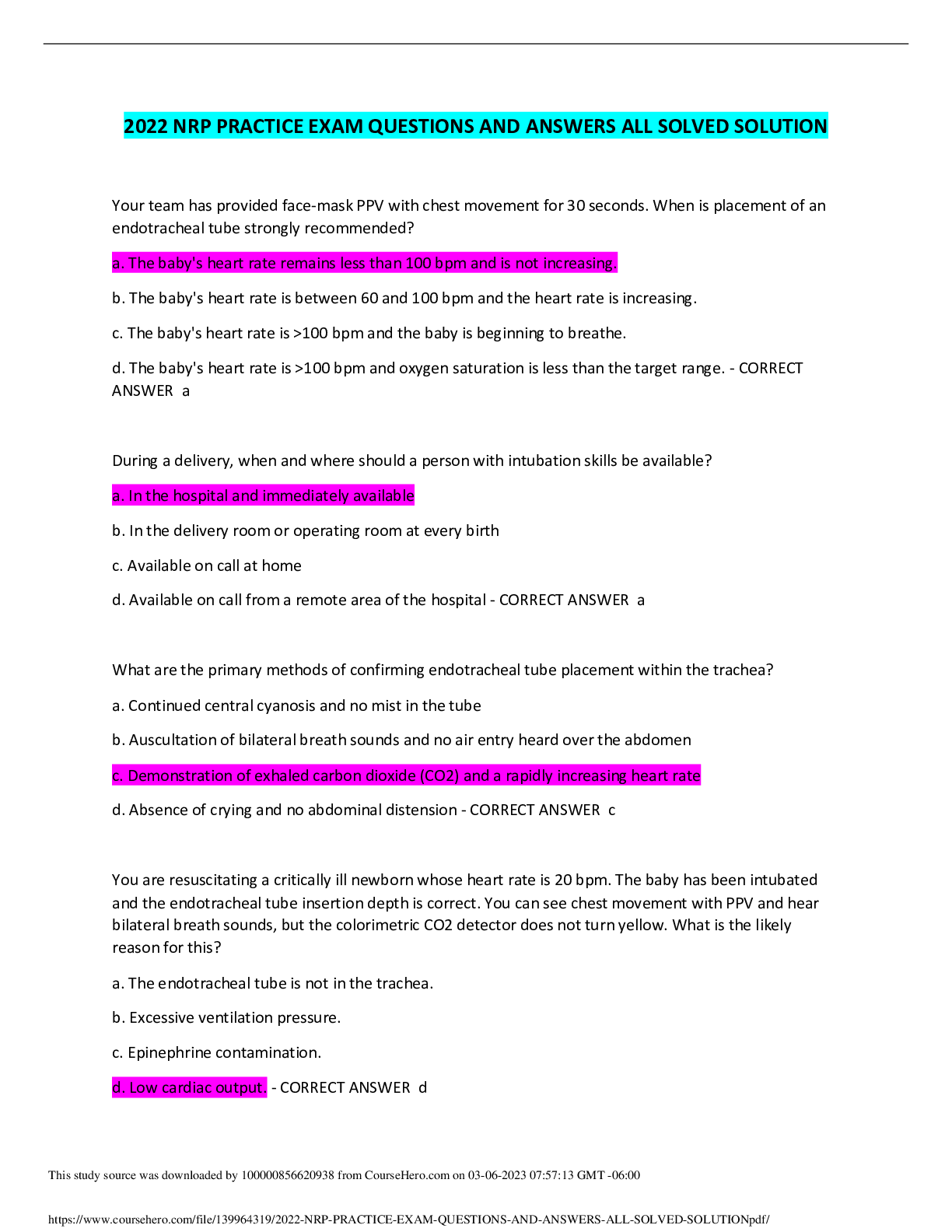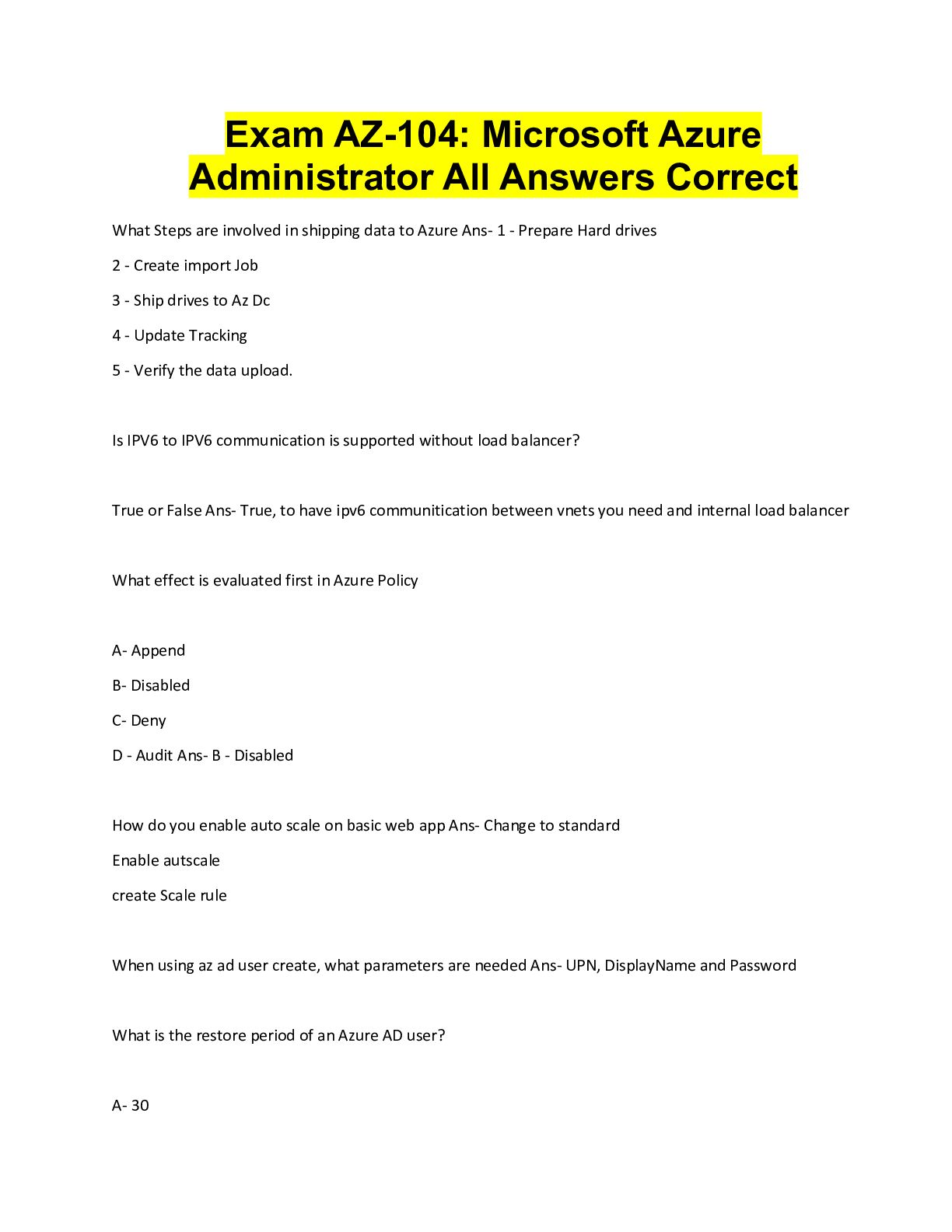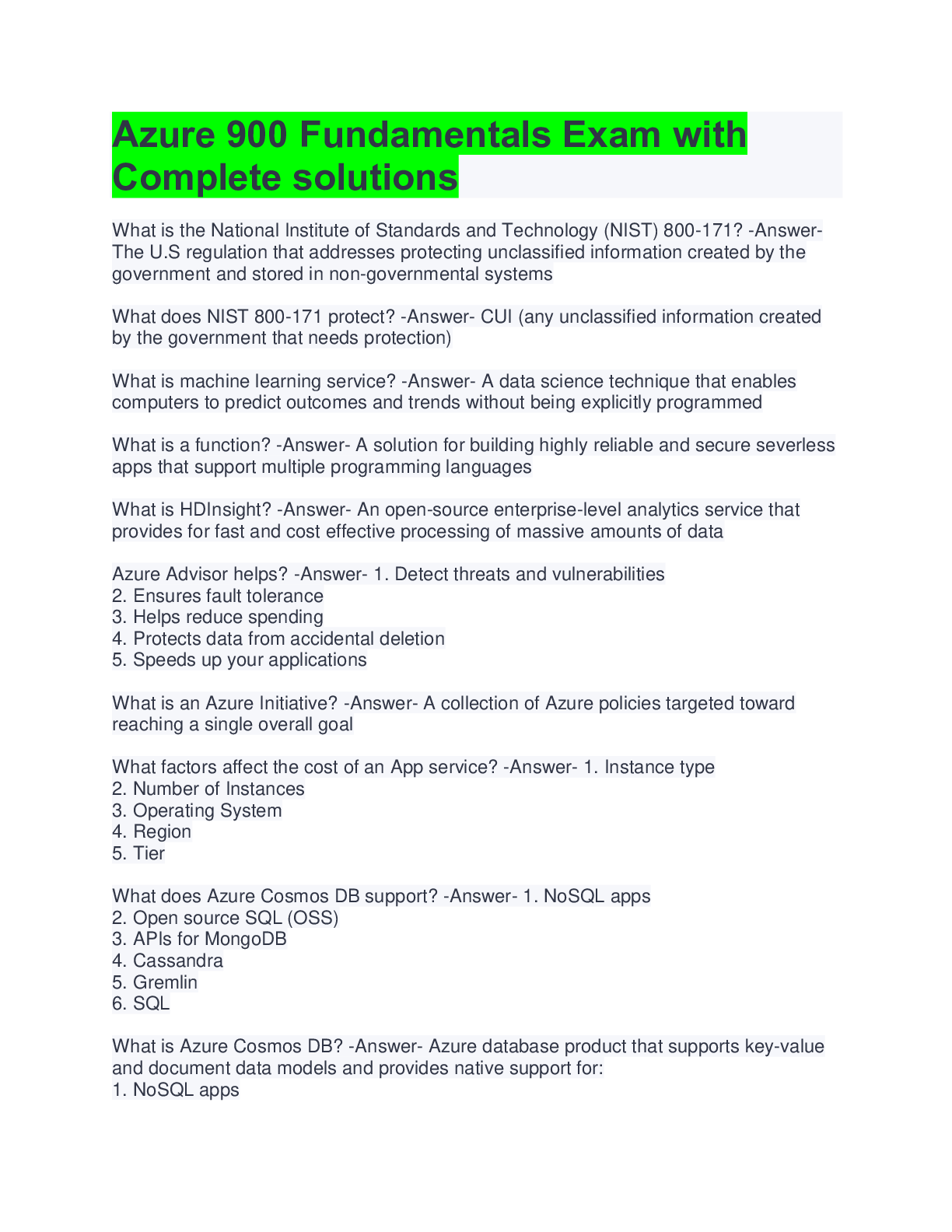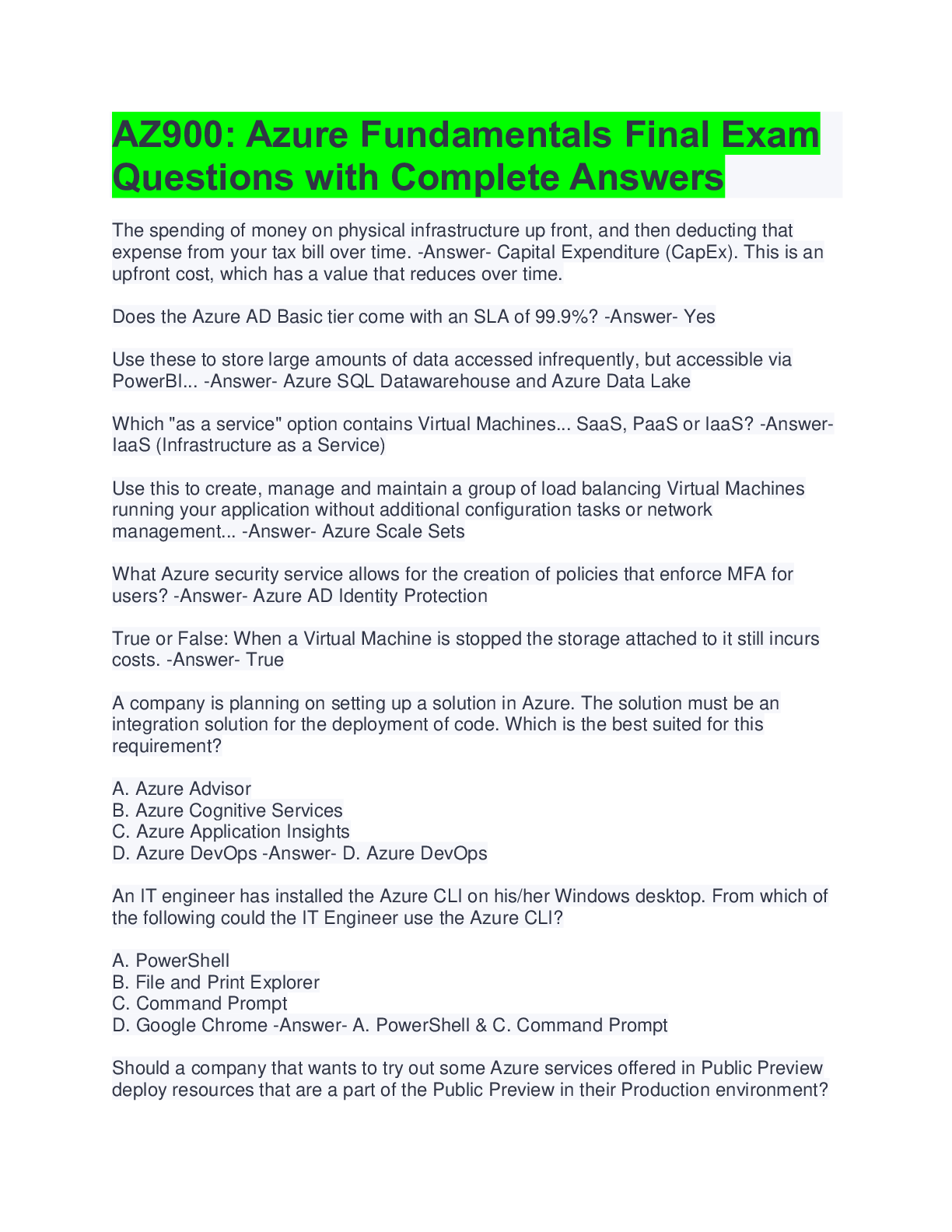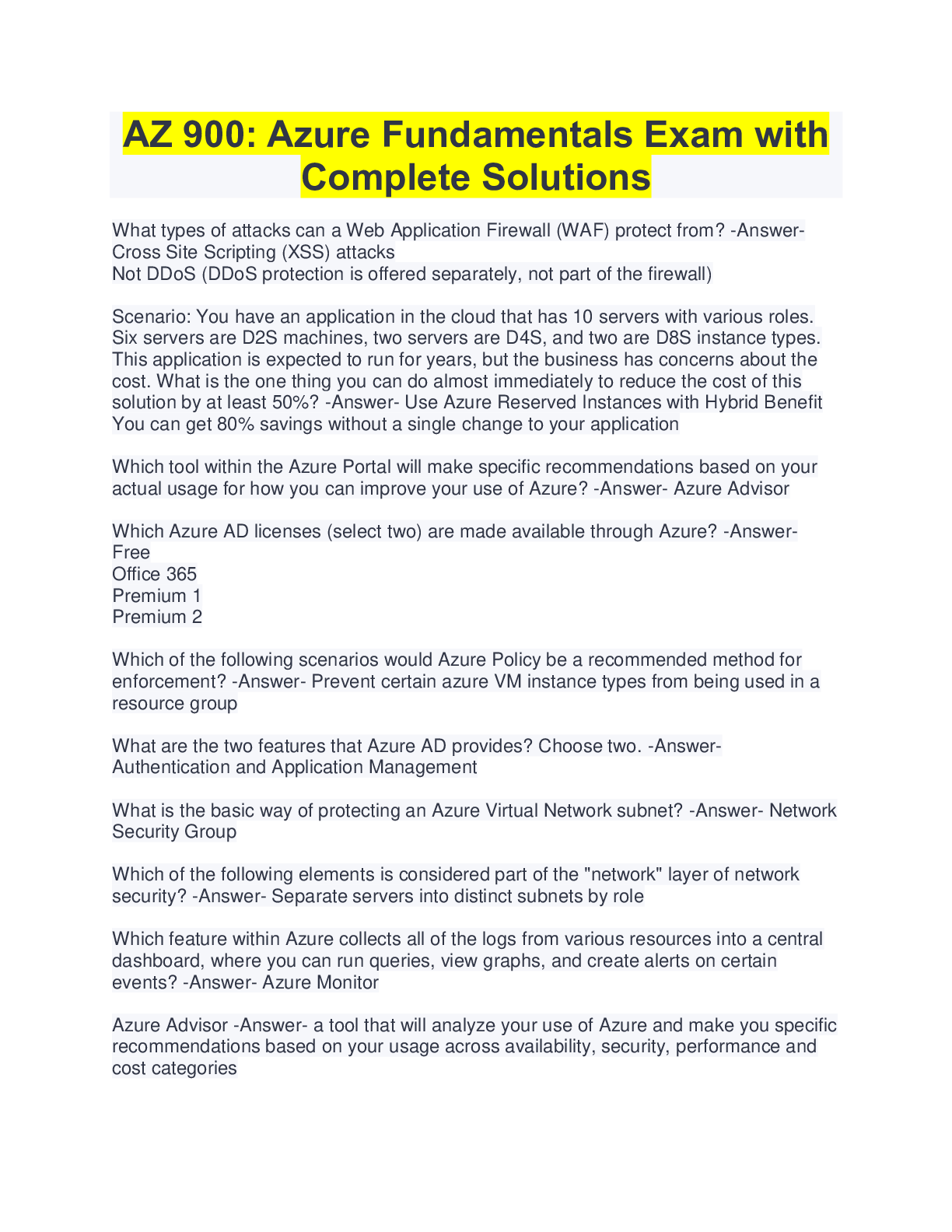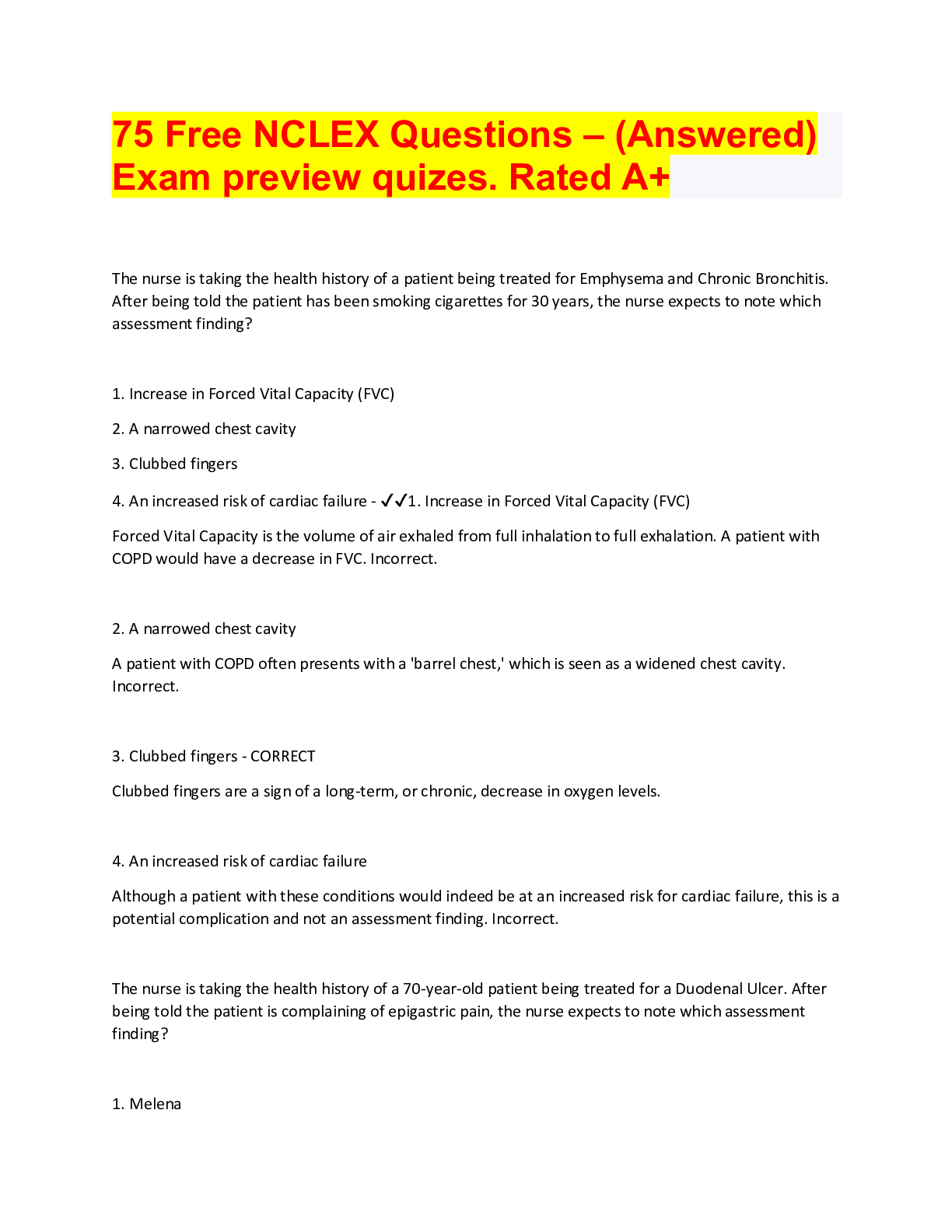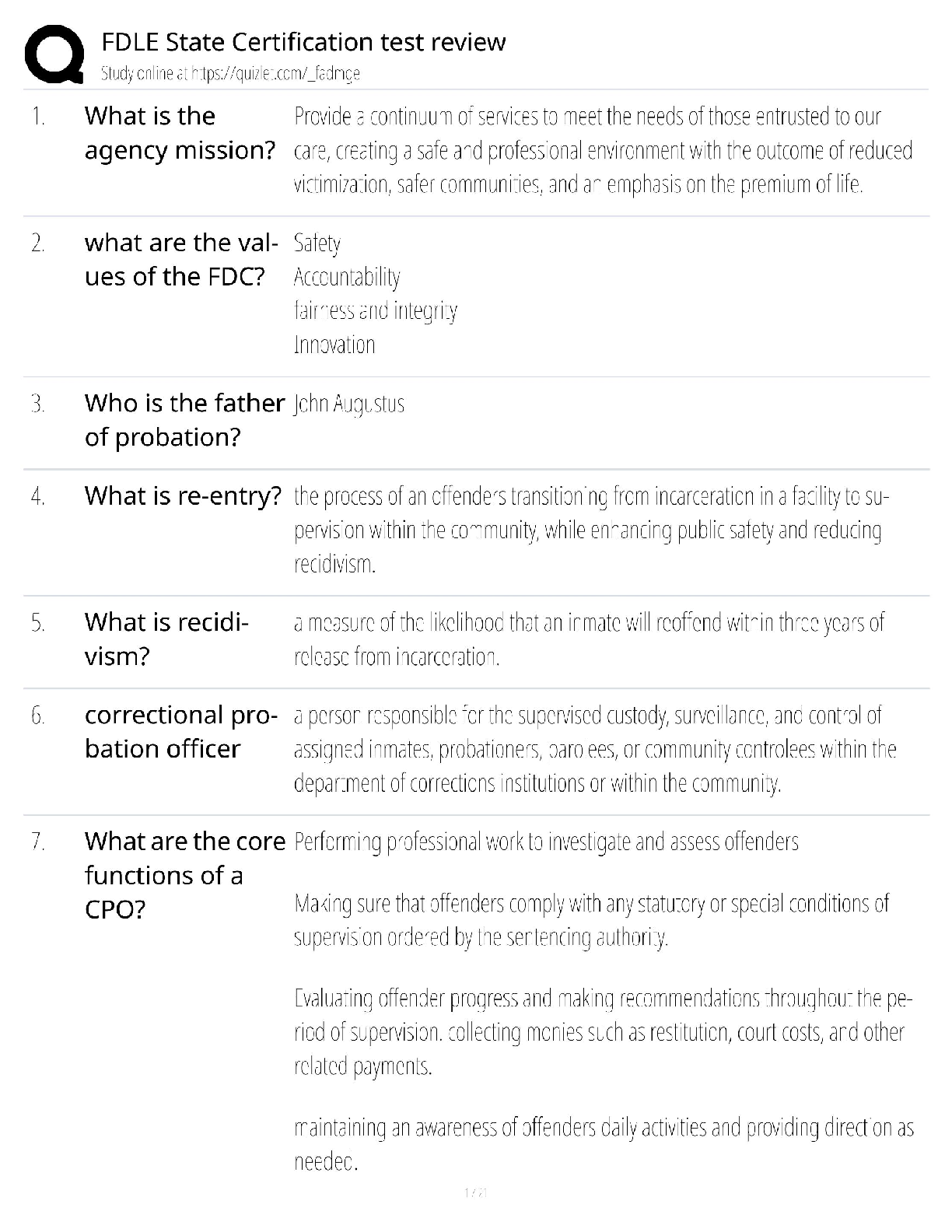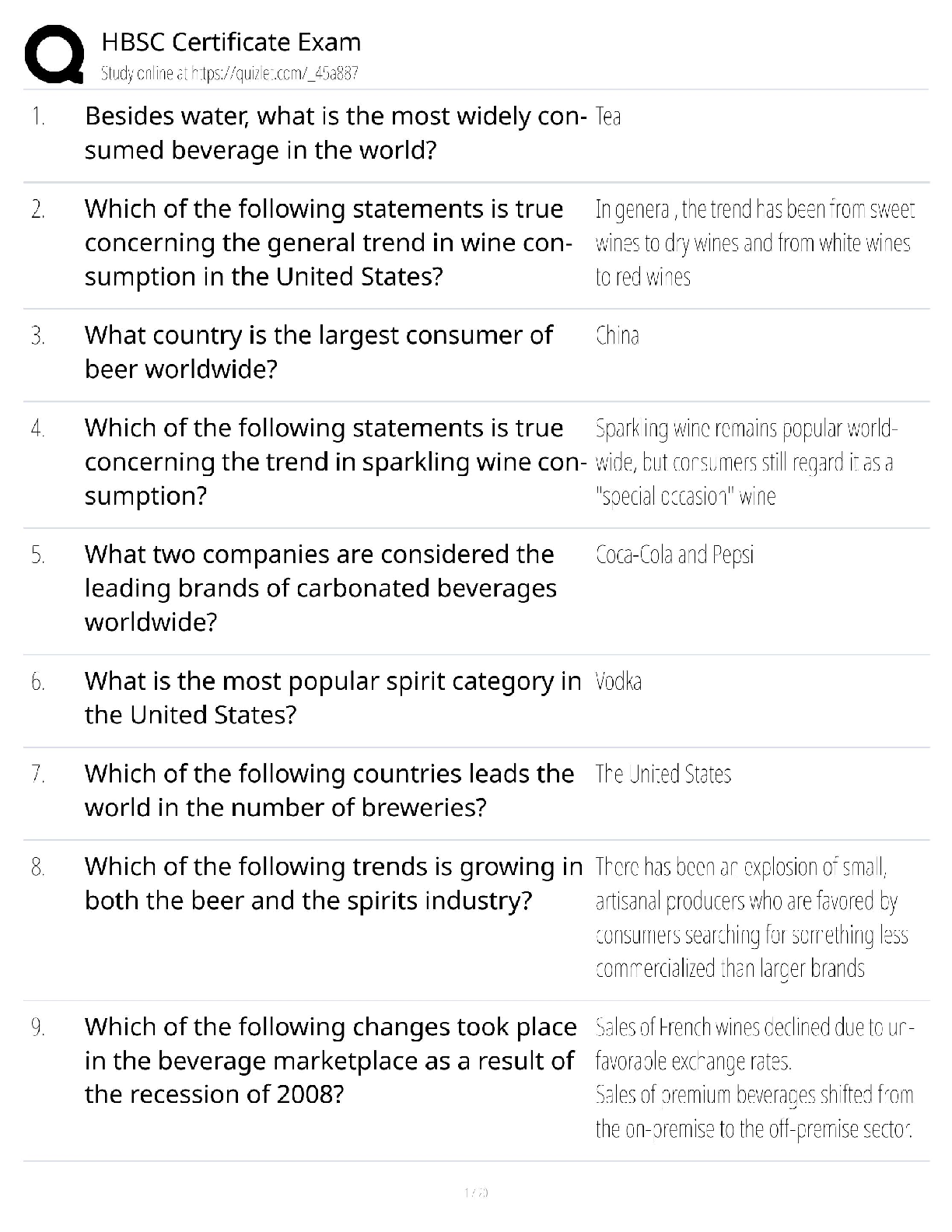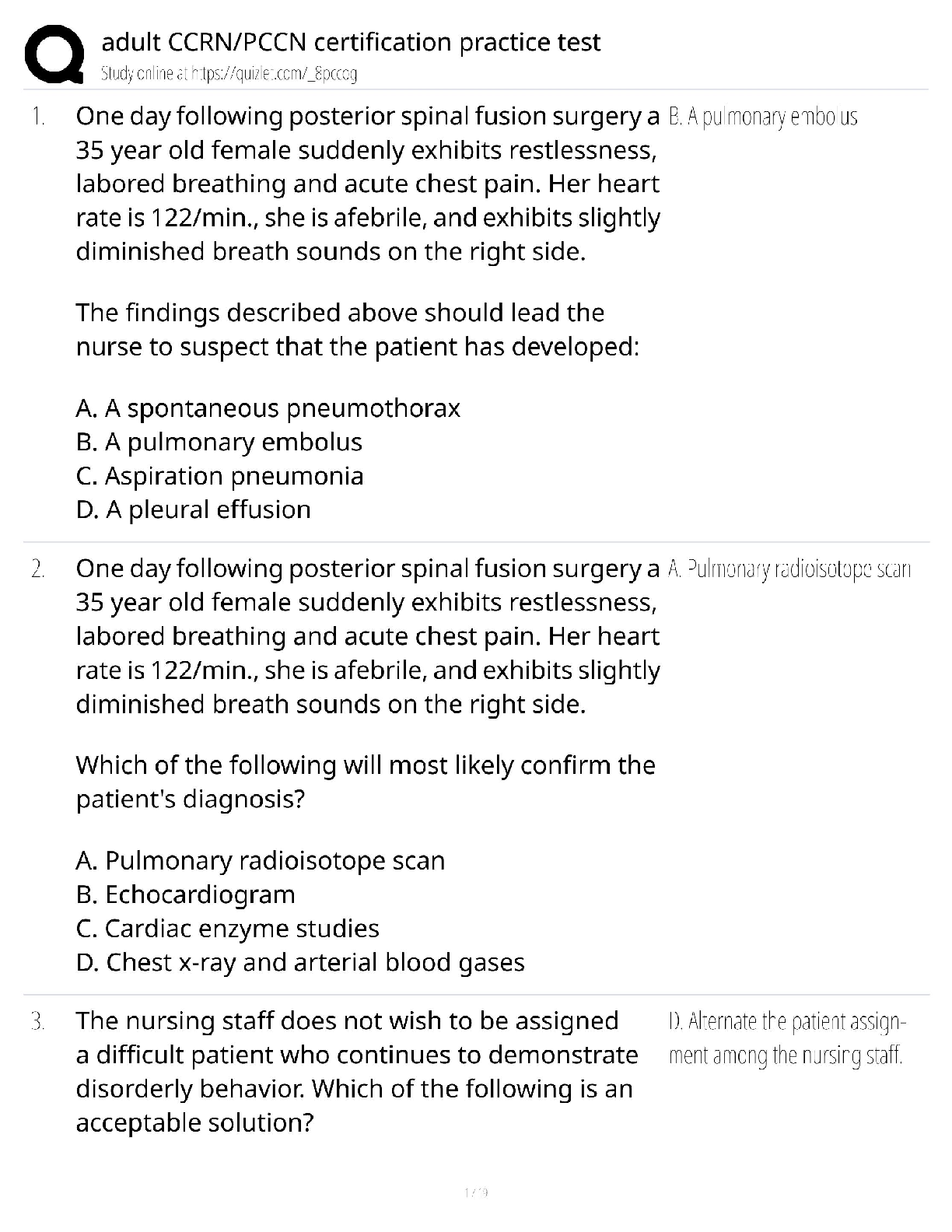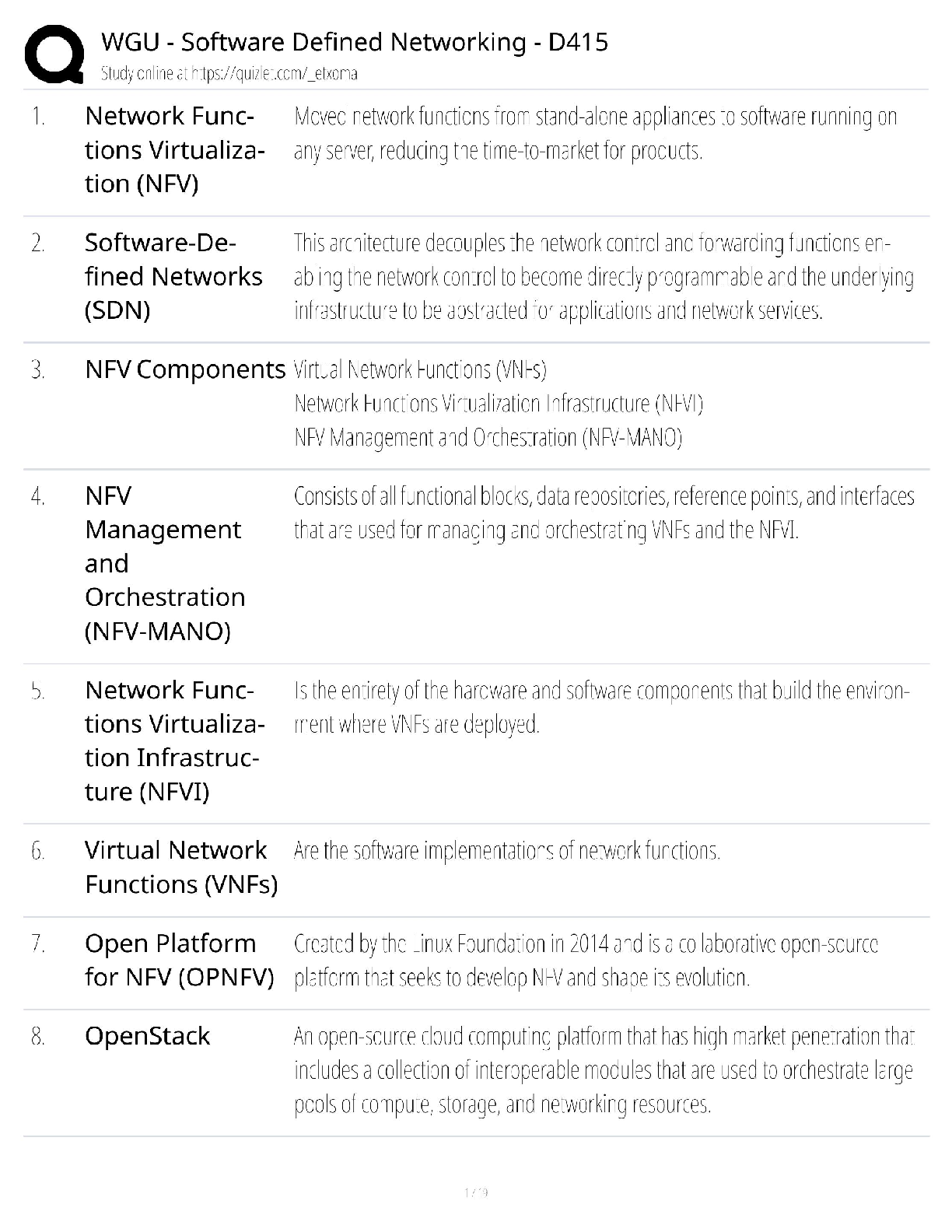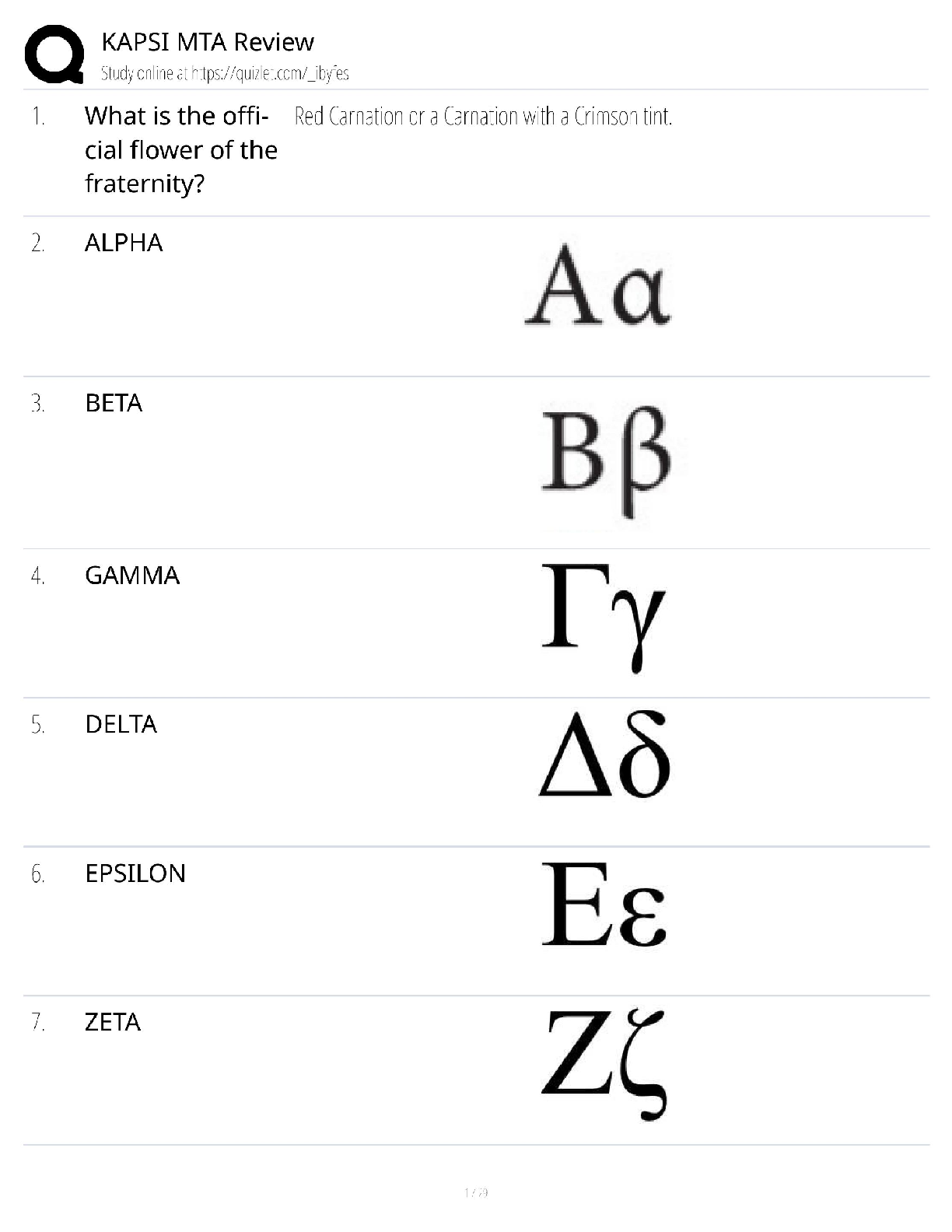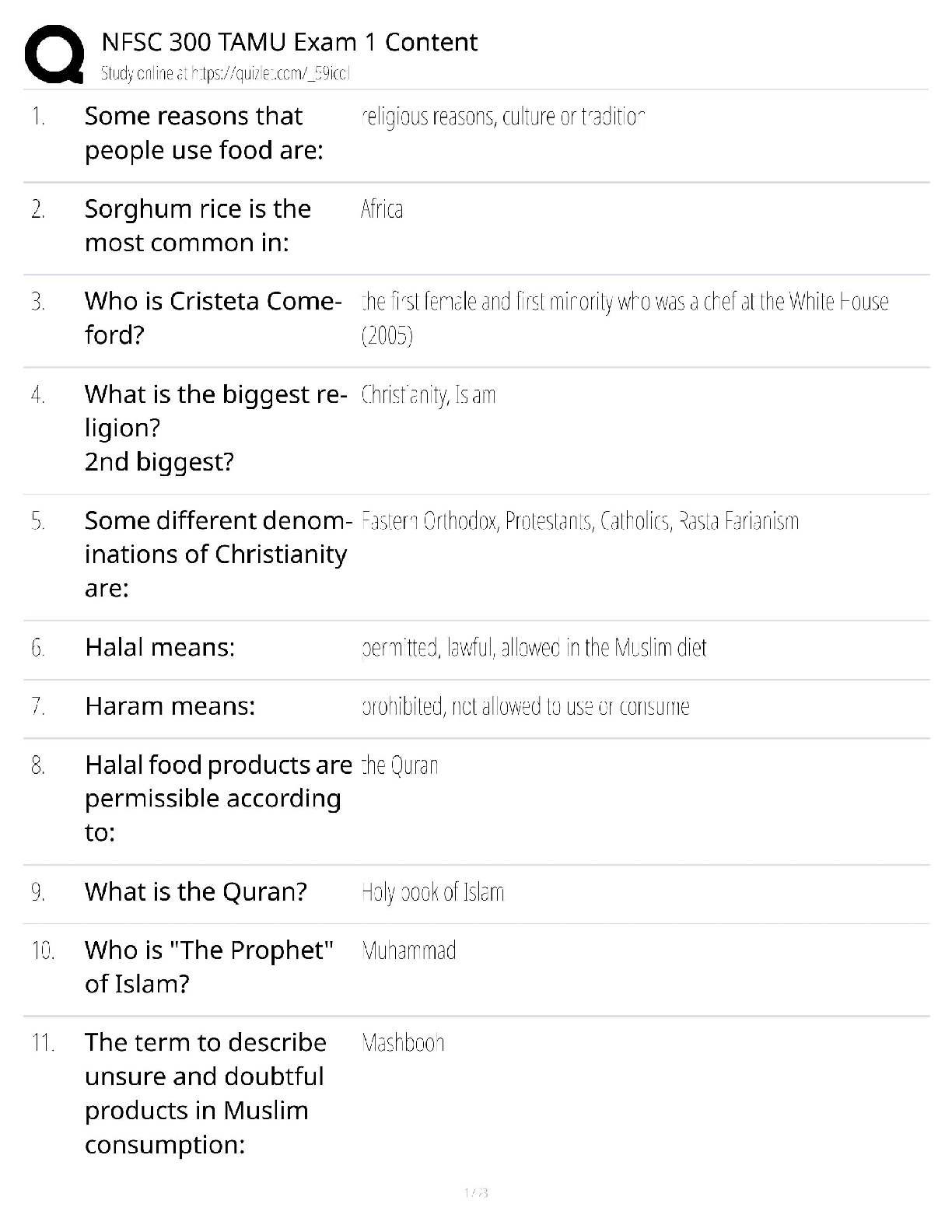*NURSING > QUESTIONS & ANSWERS > Chapter 8: Assessing General Status and Vital Signs, Questions and answers. Graded A+ (All)
Chapter 8: Assessing General Status and Vital Signs, Questions and answers. Graded A+
Document Content and Description Below
Chapter 8: Assessing General Status and Vital Signs, Questions and answers. Graded A+ The nurse is assessing a client's respiratory rate. Which of the following should the nurse do to ensure accur ... acy of this assessment? - ✔✔Watch chest movement before removing the stethoscope after counting the apical beat Explanation: Because breathing is under voluntary in addition to autonomic control, clients may intentionally or inadvertently alter their breathing rate if they are aware that it is being assessed. To obtain an accurate assessment, observe respirations without alerting the client by watching chest movement before removing the stethoscope after you have completed counting the apical beat. Asking the client to breathe normally may still make the client self-conscious and prevent an accurate measurement. Observing the clients chest movement before calling the client back to the examination room would not be practical due to the distance. Performing the assessment multiple times is unnecessary and time consuming When assessing a client's pulse, the nurse should be alert to which of the following characteristics? - ✔✔Rate, rhythm, amplitude and contour, and elasticity. Explanation: Several characteristics should be assessed when measuring the radial pulse: rate, rhythm, amplitude and contour, and elasticity. A client's radial artery pulse rate is 42 beats in 30 seconds with occasional pauses. What action should the nurse take? - ✔✔auscultate the heart rate for a full minute Explanation: If the radial pulse is irregular, the apical heart rate should be auscultated for a full minute. There is no need to palpate the carotid artery. Documenting that the pulse is 84 and irregular cannot be validated unless the heart rate is auscultated for a full minute. Palpating the radial pulse for a full minute will not necessarily provide the client's correct pulse rate since pauses are occurring.The nurse places the following device on a client's finger. What information is this device providing to the nurse? - ✔✔Oxygen saturation Explanation: Oxygen saturation is the percentage to which hemoglobin is filled with oxygen. Pulse oximetry is a noninvasive technique to measure oxygen saturation of arterial blood. This device is not used to measure pulse, temperature, or respiratory rate. Since the nurse is unable to obtain an oversized cuff to assess an adult patient with a large arm, the nurse uses an average-sized cuff. What blood pressure reading will the nurse most likely obtain for this patient? - ✔✔Reading will be high Explanation: If the blood pressure cuff used is too small and the patient's arm is large, the blood pressure reading will be high. If the blood pressure cuff is too large and the patient's arm is small, the reading will be low. The reading obtained with an inappropriately sized cuff will not be correct. The reading can be obtained; however, the reading will be incorrect. A client comes to the cardiovascular intensive care unit (CVICU) directly after a three-vessel coronary artery bypass graft (CABG). The client's orders state "maintain systolic blood pressure >90 but <120." How does this order affect the monitoring of the client's blood pressure? - ✔✔The nurse will assess blood pressure more frequently to ensure that it does not go beyond the ordered limits Explanation: Vital signs reflect health status, cardiopulmonary function, and overall body function. They are called vital signs because of their importance as indicators of physiological state and response to physical, environmental, and psychological stressors. Changes in vital signs often indicate changes in health. Assessment of vital signs helps nurses to establish a baseline, monitor a client's condition, evaluate responses to treatment, identify problems, and monitor risks for alterations in health. It would not be appropriate to monitor this client's BP every hour or every 4 hours or to delegate the taking of this client's BP to a p [Show More]
Last updated: 3 years ago
Preview 1 out of 5 pages
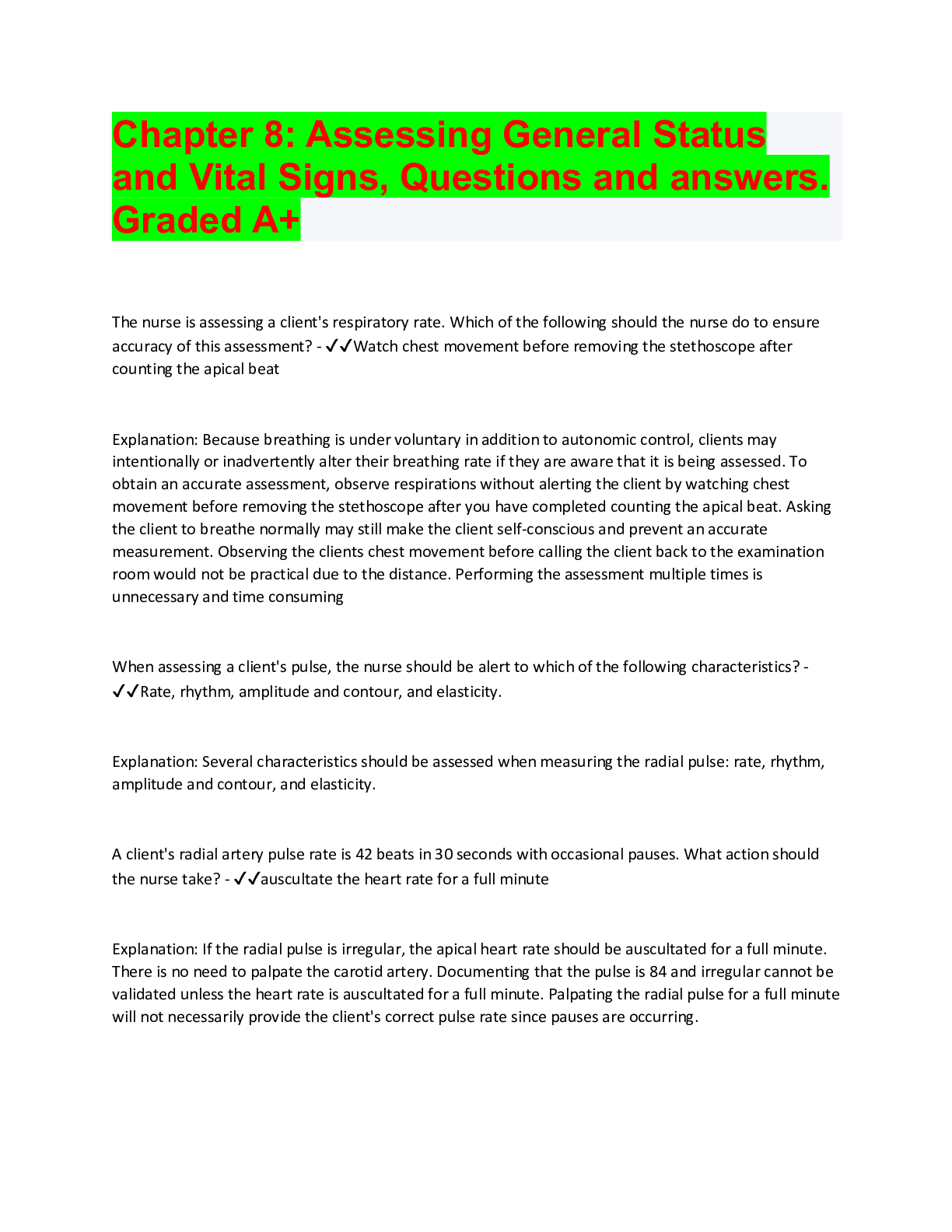
Buy this document to get the full access instantly
Instant Download Access after purchase
Buy NowInstant download
We Accept:

Reviews( 0 )
$8.00
Can't find what you want? Try our AI powered Search
Document information
Connected school, study & course
About the document
Uploaded On
Oct 21, 2022
Number of pages
5
Written in
All
Additional information
This document has been written for:
Uploaded
Oct 21, 2022
Downloads
0
Views
150

